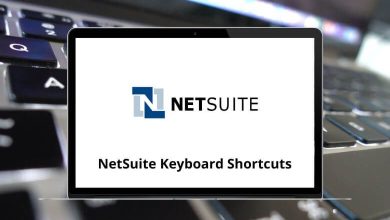10 Best Autodesk Inventor Alternatives & Competitors
Autodesk Inventor is a well-established CAD and 3D design software widely used by engineers, product designers, and manufacturers. It offers a strong toolkit for 3D modeling, simulation, visualization, and documentation. However, not every organization or individual finds Autodesk Inventor the perfect fit due to pricing, learning curve, or specific industry requirements. That’s why many professionals explore Autodesk Inventor Alternatives to find solutions better aligned with their design workflows.
Table of Contents
In this article, we’ll explore the 10 best Autodesk Inventor Competitors that provide powerful modeling, simulation, and engineering design features. Whether you’re a student seeking free tools, a business looking for scalable cloud-based CAD, or a professional engineer in need of advanced simulations, there are plenty of apps like Autodesk Inventor worth considering.
Top 10 Autodesk Inventor Alternatives
If you’re already using Inventor, you may want to check out our guide on Autodesk Inventor Shortcuts to boost your productivity.
1. Onshape
Onshape is a modern, cloud-based CAD solution designed for collaborative product design. Unlike traditional software, it runs directly in your browser, eliminating installation needs and ensuring seamless teamwork across devices.
Key Features:
- Cloud-native design with version control.
- Real-time collaboration for teams.
- Parametric modeling and simulation support.
- Secure data management and accessibility.
- Compatible with multiple devices (PC, tablet, mobile).
Onshape is particularly strong for teams working remotely or in distributed environments. Its ease of collaboration makes it one of the most popular Autodesk Inventor Alternatives for businesses seeking flexibility. To improve your workflow in Onshape, you can also check Onshape Shortcuts.
2. SOLIDWORKS
SOLIDWORKS by Dassault Systèmes is one of the leading Autodesk Inventor Competitors, widely used in mechanical design, simulation, and manufacturing industries. Known for its intuitive interface, SOLIDWORKS provides a full suite of CAD, CAM, and CAE tools.
Key Features:
- Powerful 3D parametric design.
- Integrated simulation and product validation.
- Sheet metal, surfacing, and weldment tools.
- Seamless collaboration with PDM (Product Data Management).
- Large ecosystem of plugins and third-party integrations.
SOLIDWORKS has a massive community and learning resources, making it ideal for both students and professionals. To speed up your work, don’t miss our guide on SolidWorks Shortcuts.
3. Solid Edge
Developed by Siemens, Solid Edge offers a comprehensive 3D design suite covering CAD, simulation, manufacturing, and data management. It is often chosen by companies requiring strong parametric and direct modeling capabilities.
Key Features:
- Synchronous technology combining parametric and direct modeling.
- Generative design tools for lightweight structures.
- Built-in simulation and motion analysis.
- Additive manufacturing support.
- Scalability for small and large businesses.
Solid Edge is especially popular among small and medium-sized companies that want robust CAD without heavy costs. You can make designing faster by learning Solid Edge Shortcuts.
4. Creo Parametric (PTC Creo)
Creo Parametric, widely known as PTC Creo, is a professional-grade CAD solution tailored for complex engineering needs. Its strong reputation comes from its parametric modeling, advanced simulation, and product lifecycle management capabilities.
Key Features:
- Advanced parametric and direct modeling.
- AR (Augmented Reality) design visualization.
- Powerful simulation and generative design tools.
- Excellent scalability for enterprise-level projects.
- Integration with IoT (Internet of Things) solutions.
PTC Creo is a reliable choice for industries such as automotive, aerospace, and heavy engineering. For faster modeling, explore Creo Parametric Shortcuts.
5. IronCAD
IronCAD is another flexible CAD application that emphasizes intuitive 3D modeling with a drag-and-drop approach. It bridges the gap between parametric and direct modeling, making it a user-friendly option for designers.
Key Features:
- Innovative drag-and-drop 3D design.
- Dual-mode modeling (parametric + direct).
- Built-in rendering and animation tools.
- Collaboration-ready with various file formats.
- Supports sheet metal and assembly design.
IronCAD is often chosen by small design teams who want easy-to-learn CAD tools without compromising on functionality. Learn about IRONCAD Shortcuts to work more efficiently.
6. CATIA
CATIA, developed by Dassault Systèmes, is a high-end CAD platform widely used in aerospace, automotive, and advanced manufacturing industries. It’s considered one of the most advanced apps like Autodesk Inventor, especially for large-scale product design.
Key Features:
- Robust 3D modeling and product design.
- Advanced surface modeling for complex geometries.
- Digital mock-up and simulation tools.
- Industry-specific modules for aerospace and automotive.
- Excellent scalability for enterprise-level projects.
Though complex, CATIA is a standard in industries where precision and complexity are critical. Boost your productivity with Catia V5 Shortcuts.
7. Rhinoceros (Rhino)
Rhinoceros, often referred to as Rhino, is a versatile CAD software known for its precision in 3D modeling, especially for complex curves and surfaces. Architects, industrial designers, and engineers often rely on it for design flexibility.
Key Features:
- NURBS-based modeling for high-precision curves.
- Extensive plugin ecosystem (e.g., Grasshopper).
- Compatibility with multiple 3D formats.
- Great for prototyping, architecture, and jewelry design.
- Affordable compared to high-end CAD tools.
Rhino’s adaptability makes it a favorite for creative industries as well as engineering. To get the most out of it, refer to our guide on Rhinoceros 3D Shortcuts.
8. FreeCAD
FreeCAD is an open-source CAD platform perfect for beginners, students, and professionals looking for a cost-effective alternative. It is highly modular and supports parametric modeling.
Key Features:
- Open-source and free to use.
- Parametric modeling with modular workbenches.
- Great for product design, architecture, and mechanical engineering.
- Strong community and active development.
- Customizable with Python scripting.
FreeCAD is an excellent starting point if you want CAD without licensing costs. For efficiency tips, see FreeCAD Shortcuts.
9. Siemens NX
Siemens NX is a high-performance CAD/CAM/CAE suite tailored for enterprises needing advanced engineering and manufacturing solutions. It’s a premium option among Autodesk Inventor Competitors.
Key Features:
- End-to-end product development support.
- Advanced generative design and topology optimization.
- Integrated manufacturing and simulation tools.
- Excellent data management and PLM (Product Lifecycle Management).
- Used in aerospace, automotive, and industrial equipment sectors.
NX is more than just CAD; it’s a full ecosystem for product innovation. If you’re using Siemens NX, check our Siemens NX Shortcuts for productivity gains.
10. BricsCAD
BricsCAD is a versatile CAD solution offering 2D drafting, 3D modeling, and BIM capabilities. It is considered a cost-effective yet powerful option among Autodesk Inventor Alternatives.
Key Features:
- DWG-based platform for 2D and 3D design.
- Parametric 3D modeling and sheet metal tools.
- Supports mechanical and architectural design workflows.
- Strong compatibility with AutoCAD files.
- Affordable licensing model compared to premium CAD tools.
BricsCAD is widely chosen by professionals who need AutoCAD-like familiarity with added 3D features. Don’t forget to check BricsCAD Shortcuts to work faster.
Conclusion
Choosing the right CAD platform depends on your project scope, industry, and budget. While Autodesk Inventor remains a popular tool, these Autodesk Inventor Alternatives offer excellent features ranging from cloud-based collaboration in Onshape to enterprise-grade product lifecycle management in Siemens NX.
For those searching for apps like Autodesk Inventor, the list above highlights tools catering to small design teams, large-scale enterprises, and even students through open-source solutions like FreeCAD. Whether you prefer intuitive modeling in IronCAD, industry-specific excellence in CATIA, or cost-effective flexibility in BricsCAD, each alternative provides powerful options to suit your workflow.
READ NEXT:





